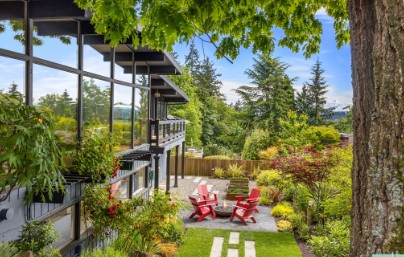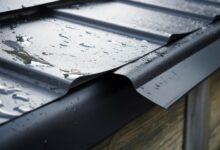Best Practices for Seattle Landscape Design: Climate Considerations and Soil Management

Seattle, known for its lush greenery and stunning natural landscapes, offers unique opportunities and challenges for landscape design. Whether you’re a homeowner looking to enhance your yard or a professional landscaper aiming to create beautiful outdoor spaces, understanding the local climate and soil is essential. Let’s explore the best practices for Seattle landscape design, focusing on climate considerations and soil management, to help you create thriving and sustainable gardens.
Understanding Seattle’s Climate
Seattle’s climate is characterized by its mild, wet winters and relatively dry summers. This maritime climate has a significant impact on plant selection, irrigation needs, and overall landscape design strategies. Here are some key climate considerations:
1. Rainfall Patterns
Seattle receives an average of 37 inches of rain annually, with the majority falling between October and April. This prolonged wet season means that plants must be able to withstand soggy conditions for extended periods.
2. Dry Summers
Contrary to popular belief, Seattle experiences dry summers, with July and August often seeing little to no rainfall. During these months, supplemental irrigation becomes crucial to keep plants healthy and vibrant.
3. Mild Temperatures
With average high temperatures ranging from 45°F in winter to 75°F in summer, Seattle’s mild climate allows for a diverse range of plants. However, frost-sensitive plants may need protection during occasional cold snaps.
Read also: “Exploring the Legal Landscape: How to Safely Buy Weed in Canada”
Plant Selection for Seattle’s Climate
Choosing the right plants is the cornerstone of successful landscape design. Let’s discuss the types of plants that thrive in Seattle’s unique climate:
1. Native Plants
Native plants are well-adapted to Seattle’s climate and soil, requiring less maintenance and water. Some excellent native choices include:
- Sword Fern (Polystichum minimum): A hardy evergreen fern that thrives in the damp, shady conditions typical of Seattle gardens.
- Oregon Grape (Mahonia aquifolium): This evergreen shrub offers year-round interest with its holly-like leaves, yellow flowers, and blue-black berries.
- Red Flowering Currant (Ribes sanguineum): A deciduous shrub with vibrant pink flowers in early spring, attracting hummingbirds and other pollinators.
2. Drought-Tolerant Plants
Given Seattle’s dry summers, incorporating drought-tolerant plants can reduce the need for irrigation. Consider plants like:
- Lavender (Lavandula spp.): Known for its fragrant flowers and silver foliage, lavender thrives in sunny, well-drained spots.
- Sedum (Sedum spp.): These succulent plants come in various shapes and colors, ideal for rock gardens and low-water landscapes.
- California Lilac (Ceanothus spp.): This evergreen shrub offers striking blue flowers and can handle dry conditions once established.
3. Shade-Loving Plants
Seattle’s abundance of tall trees creates many shaded areas. Plants that thrive in low-light conditions include:
- Hosta (Hosta spp.): With their lush foliage and variety of colors, hostas are perfect for shaded garden beds.
- Japanese Maple (Acer palmatum): These small trees or shrubs provide beautiful fall color and thrive in partial shade.
- Astilbe (Astilbe spp.): Known for their feathery plumes of flowers, astilbes add texture and color to shady spots.
Soil Management in Seattle
Seattle’s soil can vary widely, from sandy soils to heavy clay. Proper soil management is crucial for healthy plant growth and long-term landscape success. Let’s explore some best practices for managing Seattle’s soil:
1. Soil Testing
Before starting any landscaping project, it’s essential to conduct a soil test. Soil testing provides valuable information about soil pH, nutrient levels, and texture. This knowledge allows you to amend the soil appropriately for optimal plant growth.
2. Improving Drainage
Given Seattle’s heavy rainfall, managing soil drainage is vital to prevent waterlogged roots. Here are some strategies:
- Raised Beds: Building raised beds can improve drainage and provide better soil conditions for plants.
- Amending Soil: Incorporate organic matter such as compost or well-rotted manure to improve soil structure and drainage.
- French Drains: Installing French drains can help redirect excess water away from garden beds.
3. Soil Fertility
Maintaining soil fertility ensures that plants receive the necessary nutrients for healthy growth. Consider these practices:
- Composting: Regularly adding compost to your soil enriches it with essential nutrients and improves its structure.
- Mulching: Applying a layer of mulch helps retain soil moisture, suppress weeds, and gradually adds organic matter to the soil as it decomposes.
- Organic Fertilizers: Use organic fertilizers like bone meal, fish emulsion, or compost tea to provide a slow-release source of nutrients.
Sustainable Landscaping Practices
In addition to selecting the right plants and managing soil, adopting sustainable landscaping practices can enhance the resilience and environmental impact of your garden. Let’s discuss some key practices:
1. Water-Wise Landscaping
Water conservation is crucial, especially during Seattle’s dry summer months. Implementing water-wise landscaping practices can help reduce water usage:
- Drip Irrigation: Installing drip irrigation systems delivers water directly to the plant roots, minimizing evaporation and runoff.
- Rain Barrels: Collecting rainwater in barrels provides a sustainable source of irrigation water during dry periods.
- Drought-Tolerant Plants: As mentioned earlier, incorporating drought-tolerant plants reduces the need for supplemental watering.
2. Integrated Pest Management (IPM)
Integrated Pest Management (IPM) focuses on using environmentally friendly methods to manage pests and diseases:
- Biological Controls: Encourage beneficial insects like ladybugs and predatory beetles that naturally control pest populations.
- Cultural Practices: Rotate crops, practice good garden hygiene, and select disease-resistant plant varieties to reduce pest issues.
- Minimal Chemical Use: When necessary, use organic or low-toxicity pesticides as a last resort, and follow label instructions carefully.
3. Wildlife-Friendly Gardens
Creating a garden that supports local wildlife enhances biodiversity and adds interest to your landscape:
- Native Plants: Planting native species provides habitat and food for local wildlife, including birds, butterflies, and bees.
- Water Features: Adding a birdbath, pond, or small water feature attracts birds and beneficial insects.
- Habitat Structures: Incorporate birdhouses, bat boxes, and insect hotels to provide shelter for various species.
Let’s Discuss: Planning Your Seattle Landscape
Designing a landscape that thrives in Seattle’s unique climate and soil requires careful planning and consideration. Here are some questions to guide your planning process:
- What are your primary goals for your landscape (e.g., aesthetic appeal, vegetable gardening, wildlife habitat)?
- What is the sun and shade pattern in your garden throughout the day?
- Have you conducted a soil test to understand your soil’s characteristics?
- Are you prepared to implement sustainable practices to conserve water and support local wildlife?
Conclusion
Creating a beautiful and sustainable landscape in Seattle involves understanding the local climate, selecting the right plants, and managing soil effectively. By incorporating native and drought-tolerant plants, improving soil drainage and fertility, and adopting sustainable practices, you can design a garden that thrives year-round.
Are you ready to transform your outdoor space? Let’s discuss your vision and the specific challenges you face in your garden. Together, we can create a landscape that not only looks stunning but also thrives in Seattle’s unique environment.








